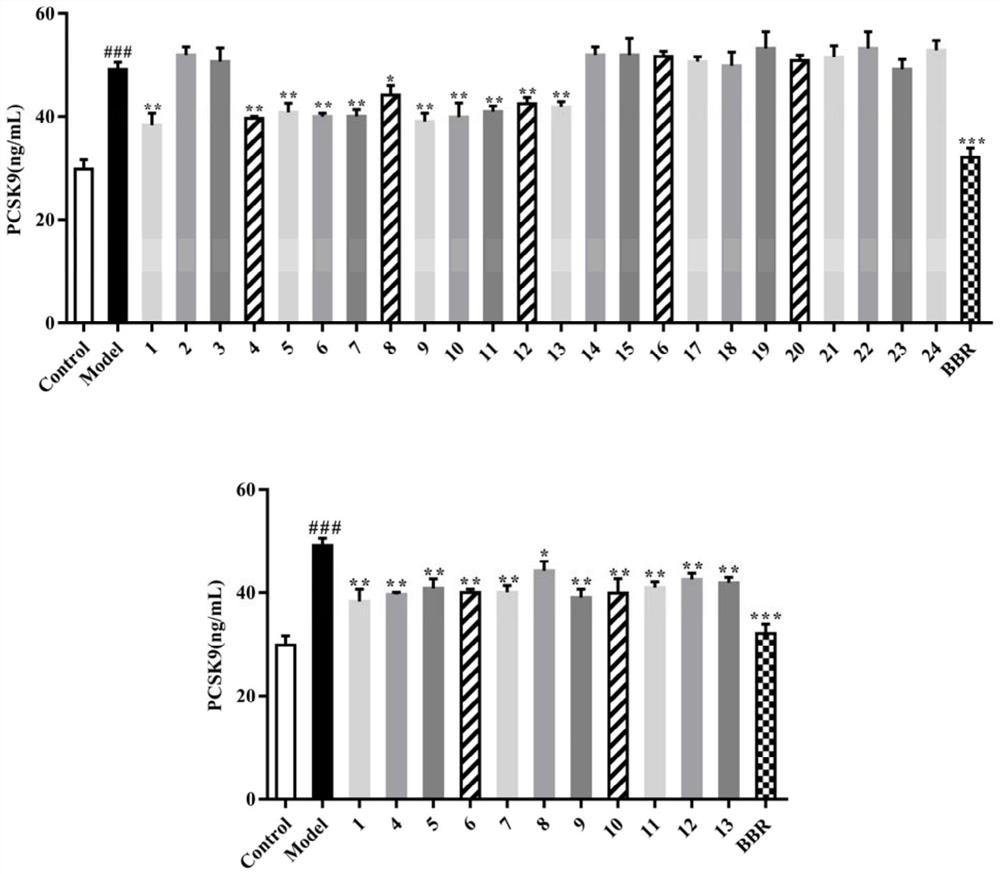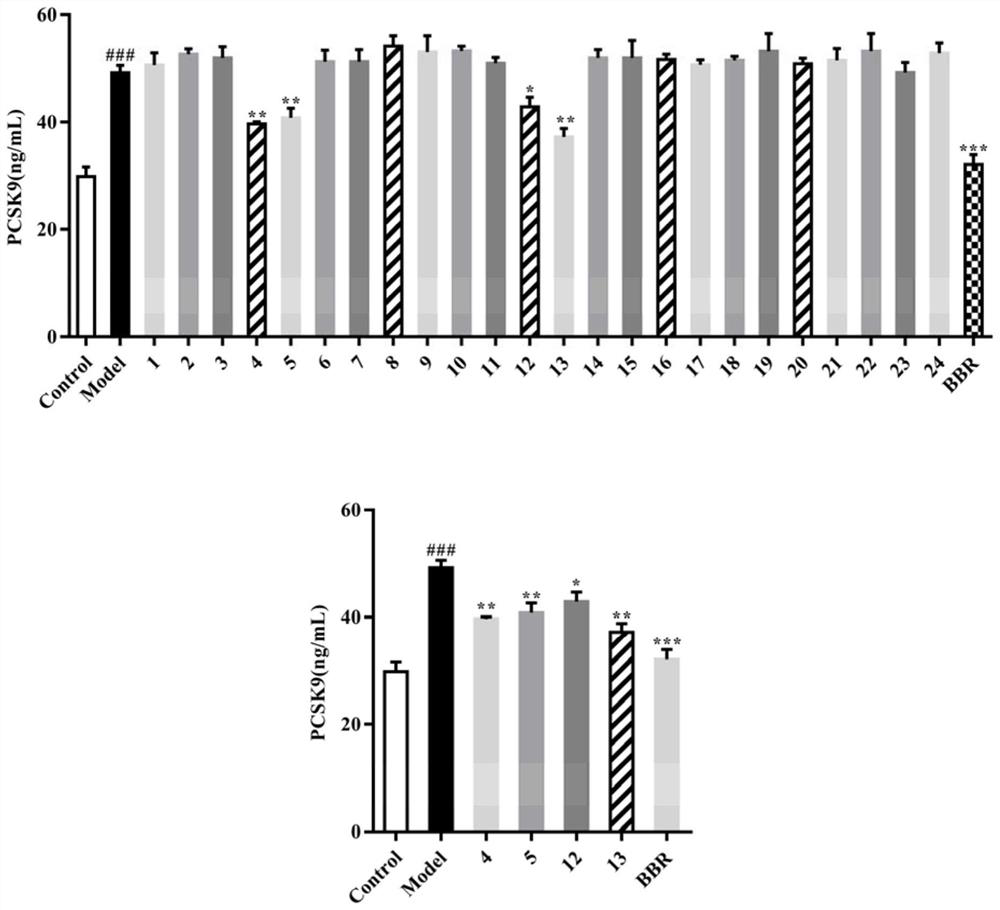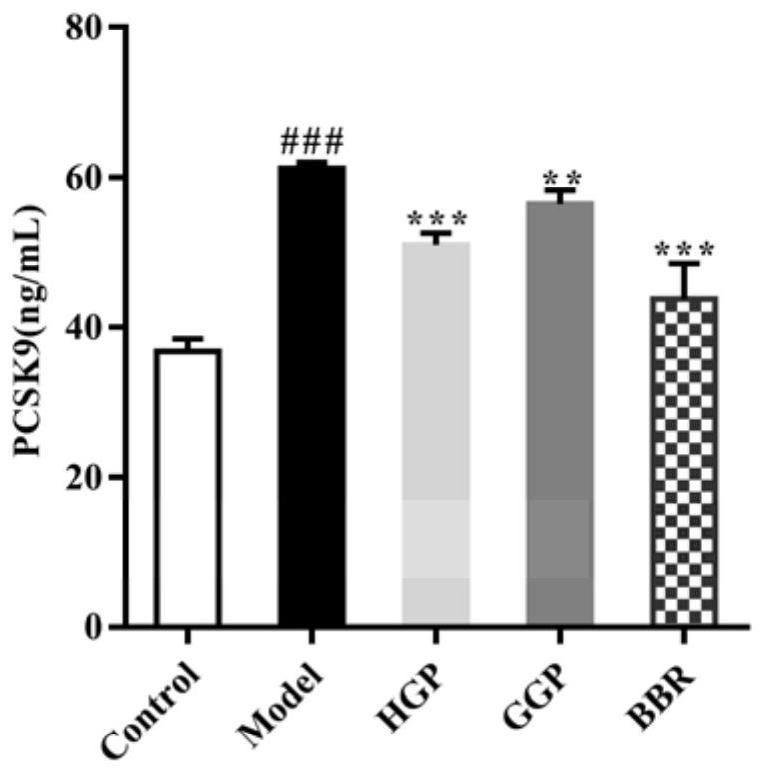Application of saponin compounds capable of reducing PCSK9 secreted by hepatocytes in gynostemma pentaphyllum total glycoside particles
A compound and hepatocyte technology, applied in the field of natural medicinal chemistry, can solve the problems of increasing PCSK9 and reducing lipid-lowering activity, and achieve the effect of enhancing lipid-lowering effect, blood-lipid-lowering activity and drug safety guarantee.
- Summary
- Abstract
- Description
- Claims
- Application Information
AI Technical Summary
Problems solved by technology
Method used
Image
Examples
Embodiment 1
[0033] Embodiment 1 The preparation method of monomer compound in Gynostemma pentaphyllum from Hunan origin and Guangxi origin
[0034] The medicinal materials of Gynostemma japonica from the two origins were taken separately, extracted twice by decocting method, extracted with 8 times the amount of water for 2 hours each time, the extracts were combined, filtered and concentrated to obtain the total Gynostemma saponin extract. The total saponin extract of Gynostemma pentaphyllum was taken, and ultrasonically extracted with 8 times the amount of methanol for 5 times for 20 min each time. The filtrates were combined and concentrated under reduced pressure to obtain the methanol-soluble fraction. An appropriate amount of methanol-soluble extract was subjected to deactivated silica gel column chromatography, eluted with a gradient of chloroform-methanol-water (100:0:0→0:100:0), checked by TLC, and 5 fractions were combined. (Fr.a~Fr.i). Then repeat silica gel, ODS, Sephadex LH-2...
Embodiment 2
[0060] Example 2 Some monomeric compounds in Gynostemma pentaphyllum from Hunan origin and Guangxi origin have significant PCSK9 reducing activity on HepG2 cells under the condition of 20 μM drug concentration
[0061] Human hepatoma cells (HepG2) were divided into several groups, each group had three parallel wells, and 1*10 cells were inoculated in each well. 5 Cells were inserted into 12-well plates and cultured in DMEM low-glucose medium containing 10% fetal bovine serum in 5% CO. 2 After inoculating cells, these groups of cells were treated as follows: the first group was a blank group, cultured with DMEM low-glucose medium containing 5% fetal bovine serum (FBS), and the second group was The model group was cultured with DMEM low-glucose medium containing 5% lipoprotein-deficient serum (LPDS), and the subsequent groups were the administration groups of different monomer compounds (20 μM), which were cultured with DMEM low-glucose medium containing 5% LPDS. Culture, the b...
Embodiment 3
[0063] Example 3 Some monomeric compounds in Gynostemma pentaphyllum from Hunan origin and Guangxi origin have significant PCSK9 reducing activity on HepG2 cells under the condition of 10 μM drug concentration and total Gynostemma glycosides
[0064] Human hepatoma cells (HepG2) were divided into several groups, each group had three parallel wells, and 1*105 cells were inoculated into 12-well plates in each well, and cultured in DMEM low-glucose medium containing 10% fetal bovine serum. %CO2 in a 37°C incubator; after inoculation, these groups of cells were treated as follows: the first group was a blank group, cultured with DMEM low-glucose medium containing 5% FBS, and the second group was a model group, Cultured with DMEM low-glucose medium containing 5% LPDS, and then several groups were respectively treated with different monomer compounds (10 μM) or total glycosides (50 μg / mL) were cultured with DMEM low-sugar medium containing 5% LPDS, The blank group was treated for 48...
PUM
 Login to View More
Login to View More Abstract
Description
Claims
Application Information
 Login to View More
Login to View More - R&D
- Intellectual Property
- Life Sciences
- Materials
- Tech Scout
- Unparalleled Data Quality
- Higher Quality Content
- 60% Fewer Hallucinations
Browse by: Latest US Patents, China's latest patents, Technical Efficacy Thesaurus, Application Domain, Technology Topic, Popular Technical Reports.
© 2025 PatSnap. All rights reserved.Legal|Privacy policy|Modern Slavery Act Transparency Statement|Sitemap|About US| Contact US: help@patsnap.com



